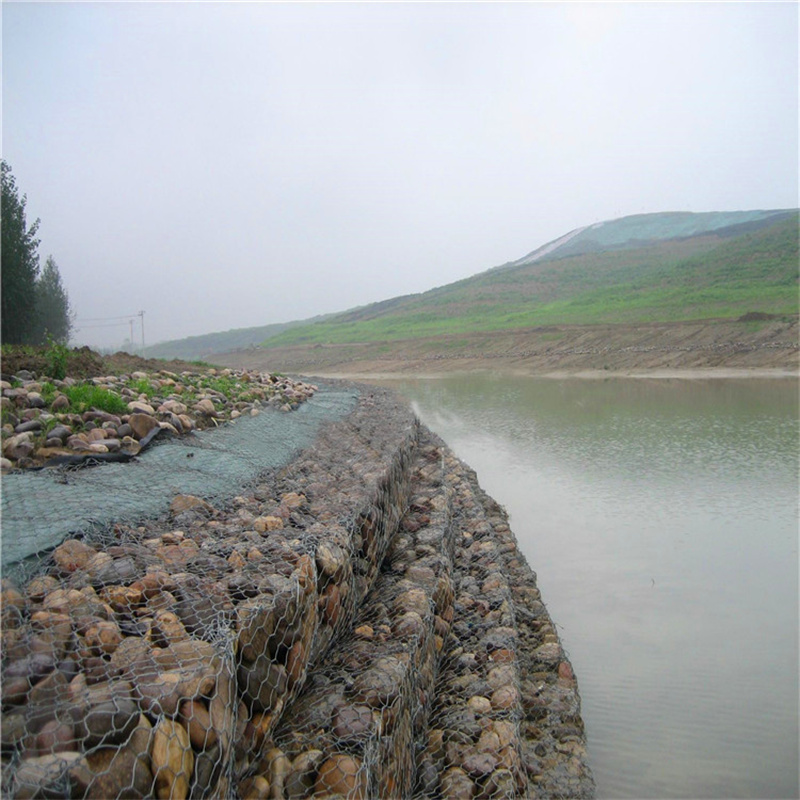Abu . 11, 2024 21:16 Back to list
Exploring the Benefits and Features of Sandstone Gabion Walls in China’s Landscape Design
The Benefits and Features of China Sandstone Gabion Walls
In recent years, the use of gabion walls has gained significant popularity in landscaping, civil engineering, and environmental management. Among the materials employed in these structures, China sandstone stands out for its durability, aesthetic appeal, and environmental benefits. This article explores the advantages of using China sandstone in gabion walls and their applications in various settings.
What are Gabion Walls?
Gabion walls are structures made of wire mesh cages filled with rocks, stones, or other materials. They are primarily used for erosion control, slope stabilization, and as retaining walls. The versatility of gabion walls allows them to be employed in a wide range of settings, including gardens, roadsides, riverbanks, and construction sites. The use of natural materials like sandstone enhances the wall's aesthetic value while preserving the environment.
Advantages of China Sandstone
1. Durability and Strength Sandstone is known for its robustness and resistance to weathering. When used in gabion walls, China sandstone can endure harsh weather conditions, including rain, wind, and temperature fluctuations. This characteristic minimizes maintenance costs and prolongs the lifespan of the gabion wall.
2. Aesthetic Appeal One of the most striking benefits of using China sandstone is its natural beauty. Sandstone typically features warm tones and textures that blend seamlessly into various landscapes. Whether used in urban settings, rural gardens, or natural parks, sandstone gabion walls add visual interest and elegance to the environment.
3. Environmental Benefits Gabion walls constructed with natural materials like sandstone promote biodiversity by providing habitats for small animals and plants. These structures can enhance soil retention and promote vegetation growth, playing a crucial role in preventing soil erosion. Furthermore, they allow for increased water drainage, reducing waterlogging in surrounding areas.
china sandstone gabion wall

4. Cost-Effectiveness Compared to traditional walls made from concrete or brick, gabion walls are relatively inexpensive to construct. The use of locally sourced China sandstone further reduces transportation costs and minimizes the carbon footprint associated with building materials. Their simple installation process also reduces labor costs, making them an economical option for various projects.
5. Versatility Gabion walls can be customized in size and shape to meet specific needs. Whether constructing a low garden wall or a high retaining structure, sandstone-filled gabions offer flexibility in design. They can also be incorporated into erosion control projects along riverbanks and hillsides, adapting to the unique contours of the landscape.
Applications in Landscaping and Civil Engineering
In landscaping, sandstone gabion walls are often used to create striking features such as garden borders, seating areas, and decorative accents. They can also act as sustainable solutions for terracing slopes, providing both function and beauty.
In civil engineering, these walls are effective in managing stormwater runoff and stabilizing soil in areas prone to erosion. Their permeable nature allows water to flow through, reducing pressure on conventional drainage systems while preventing damage to surrounding infrastructure.
Conclusion
China sandstone gabion walls represent a sustainable, aesthetically pleasing, and functional solution for a variety of applications. Their durability, environmental benefits, and cost-effectiveness make them an attractive option for both landscaping and civil engineering projects. As communities continue to prioritize sustainability and natural beauty, the popularity of gabion walls filled with sandstone is likely to grow, contributing to more resilient and visually appealing environments.
-
Visualizing Gabion 3D Integration in Urban Landscapes with Rendering
NewsJul.23,2025
-
The Design and Sustainability of Gabion Wire Mesh Panels
NewsJul.23,2025
-
The Acoustic Performance of Gabion Sound Barriers in Urban Environments
NewsJul.23,2025
-
Mastering the Installation of Galvanized Gabion Structures
NewsJul.23,2025
-
Gabion Boxes: Pioneering Sustainable Infrastructure Across the Globe
NewsJul.23,2025
-
Custom PVC Coated Gabion Boxes for Aesthetic Excellence
NewsJul.23,2025
-
Installation Tips for Gabion Wire Baskets in Erosion Control Projects
NewsJul.21,2025






